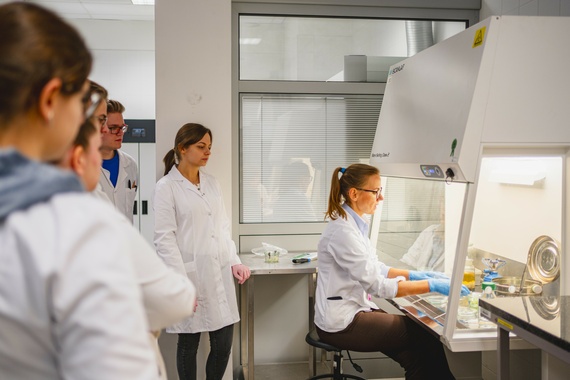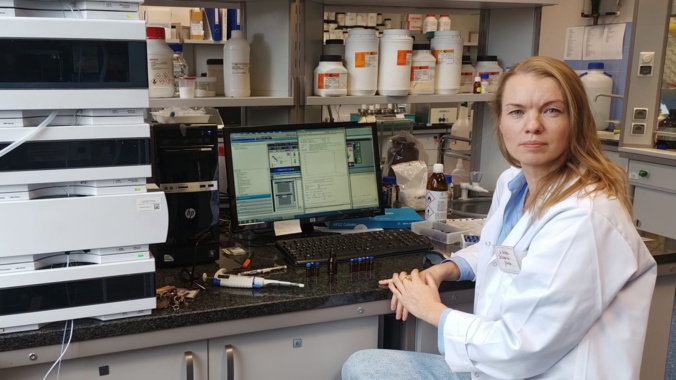



Winners of the MINIATURE 7 competition
The Discipline Coordinators of the National Science Center have announced the ranking lists of projects qualified for funding under the MINIATURA 7 competition for single scientific activities. Among them were three UMW projects, submitted by units of the Pharmaceutical Faculty.
PROJEKT NR 1:
Poplar bud extracts - potential ingredients for innovative therapeutic preparations to promote epithelial regeneration and wound healing
The aim of the project is to preliminarily evaluate the in vitro biological activities of 70% ethanol/water extracts from buds of the genus Populus towards epithelial regeneration/wound healing. The test material will be 5 selected extracts obtained from buds of different poplar species (e.g., P. balsamifera, P. cathayana, P. deltoides, , P. lasiocarpa, P. suaveolens, P. therestina, P. tacamahaca, and/or hybrids of these species), and including Populus nigra and/or P. tremula (as comparative material). Buds intended for actual testing will be selected (organoleptically) for the amount of bud secretion obtained and the strength of antimicrobial activity (Staphylococcus aureus, S. epidermidis; MIC/MBC tests). In order to evaluate the potential ability of the selected extracts to regenerate epithelium/wound healing, the following tests will be performed: antimicrobial activity (extended MIC/MBC tests on more strains of Staphylococcus aureus, S. epidermidis), the effect of the extracts on the survival of fibroblasts (human NHDF cell line) and keratinocytes (human HaCaT cell line), as well as on their ability to migrate (scratch overgrowth assay) and the effect of the extracts on the expression of genes involved in inflammation and genes involved in extracellular matrix remodeling.
Project Manager: Dr. Piotr Okińczyc, Department of Pharmacognosy and Plant Medicine
PROJECT NO 2 :
Identification of enzymes active in isoquinoline alkaloid biosynthetic pathways in a medicinal plant of the species Corydalis cheilanthifolia/Elucidation of enzymes from isoquinoline alkaloid biosynthetic pathways in a medicinal plant - Corydalis cheilanthifolia
The general idea of the project is to identify the biosynthetic enzymes of isoquinoline alkaloids produced in the medicinal plant fern-leaf cocorrhiza (Corydalis cheilathifolia Hemsl.) of the poppy family (Papaveraceae). Isoquinoline alkaloids are important, highly bioactive plant metabolites produced mainly by species belonging to the Papaveraceae and Amaryllidaceae families. Extracts and plant secretions such as latex, containing these compounds, have been used for centuries in folk medicine to treat dermatological conditions, pimples, skin wounds, skin irritations, allergic rashes, dermatitis, blisters or eczema. In order to obtain larger amounts of these valuable substances from natural sources, it is necessary to know the pathways of their production. Identifying the biosynthetic enzymes responsible for the formation of isoquinoline alkaloids will make it possible in the future to redirect and increase the scale of production of the most desirable compounds of this structure and their mixtures. The biosynthetic pathways of some protoberberine, protopine and benzophenanthridine derivatives have been partially elucidated for such Papveraceae species as Coptis japonica, Macleaya cordata, Corydalis yanhusuo, Chelidonium majus and Eschscholzia californica. Preliminary studies have shown that extracts from Corydalis cheilanthifolia are a rich source of isoquinoline alkaloids with potent antibacterial and antifungal activity compared to other Papaveraceae species. The properties of these compounds have been tested against human pathogenic bacteria and pathogenic fungi, such as Pseudomonas aeruginosa, Staphylococcus aureus, Helicobacter pylori and Candida albicans. Since fern-leaf cocoranthus is a little-known species, especially in terms of its phytochemical profile and biological potential, efforts should be made to study it. Thus, the research hypothesis is to verify the presence of enzymes that have already been recognized in related species, as well as to discover new potential catalysts active in the pathways of isoquinoline alkaloid formation.
Project leader: Dr. Veronika Kozlowska, Department of Pharmaceutical Biotechnology
PROJECT NO 3 :
Physicochemical characterization and bioactivity of newly identified phenylpropanoid disaccharide esters from plants of the genus Reynoutria
Many known as well as newly identified and isolated compounds of natural origin are characterized by significant therapeutic potential. However, the full realization of this potential is often limited by the lack of research and information on their physicochemical and biopharmaceutical properties, which are necessary at the stage of preformulation studies and during the design of the target drug formulation. Vancosides A and B, unique hydroxycinnamone esters from the rhizomes of Reynoutria sp. have so far been recognized as protein kinase C inhibitors and cytotoxic compounds against triple-negative breast cancer cell lines (TNBC, MDA-MB-231). In addition, vanicoside B inhibited the two-step mouse skin tumor carcinogenesis induced by 12-O-tetradecanoylphorbol-13-acetate, exhibited anticancer activity through inhibition of cyclin-dependent kinase 8 and cytotoxicity against melanoma cell lines [1,2]. Previous work involving compositional analysis and evaluation of the therapeutic potential of rhizome extracts of 3 medicinal plants of the genus Reynoutria (Rhododendron, Polygonaceae) viz: R.sachalinensis, R.japonica and the hybrid R.xbohemica, allowed the identification and isolation of vanicosides A and B, as two main compounds from the group of disaccharide esters of phenylpropanoids. In the studies conducted by the author on 15 extracts from the aforementioned 3 raw materials using extractants of different polarity, the antiglycation potential of the complex of compounds contained therein was confirmed in an in-house model [3]. The preparations from R.sachalinensis inhibited the formation of the final advanced glycation products to the greatest extent, with the extracts obtained using diethyl ether and ethyl acetate proving to be the most active with respect to the reference compound-resveratrol. Phytochemical analysis confirmed that the rhizomes of R.sachalinensis are the richest source of these esters with a predominance of vanicoside B [4,5]. Based on the results of the ongoing research, in the absence of data from the literature regarding the characterization of the physicochemical properties and biological potential of the cannicosides A and B, the applicant plans to analyze the properties of these compounds and evaluate their antioxidant, anti-inflammatory and antiproliferative activities in order to fully characterize their potential action and prepare for future formulation and pharmacological studies. Description of the activity to be carried out: The planned work includes carrying out a study towards the characterization of the physicochemical properties of both vanicosides A and B, i.e.: 1.1./ determination of their solubility using HPLC, 1.2./ measurement of the oil/water partition coefficient using HPLC, 1.3./ study of in vitro permeability through biological membranes using the parallel permeability model of the artificial membrane-PAMPA and evaluation of their biological potential: 2.1./ antioxidant activity using a standard panel of in vitro assays determining free radical neutralization and protection of bio-molecules from oxidative degradation, 2.2./ anti-inflammatory and anti-proliferative activity in cellular models of:RAW 264.7 macrophages and HaCaT human keratinocytes, respectively, using fluorescence microscopy.
Project Manager:Dr. Arleta Dolowacka-Jozwiak, Department of Drug Formulation Technology
 Search
Search



